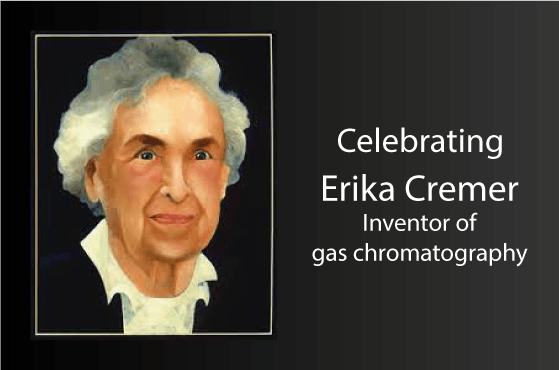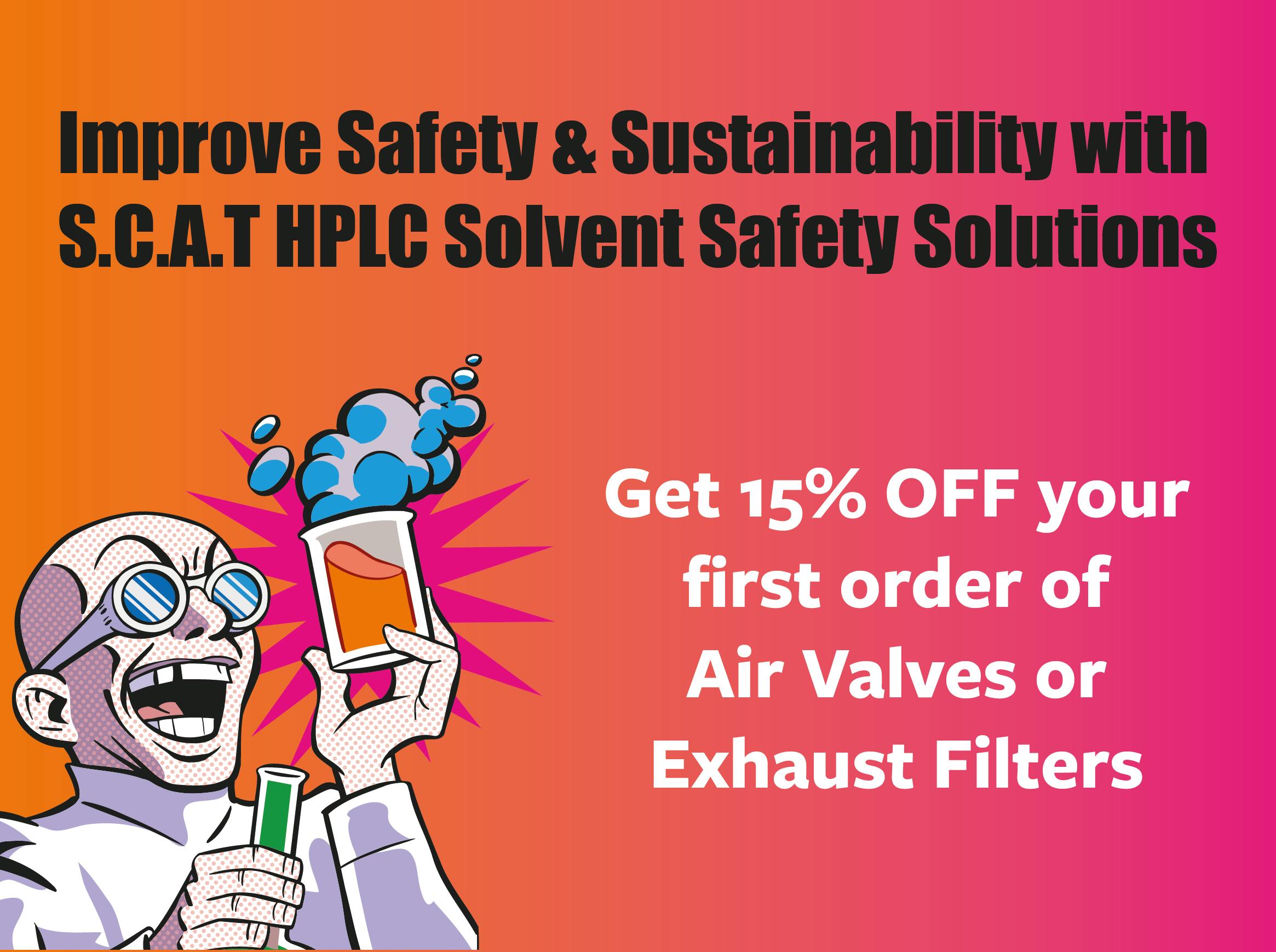
10 Feb 2022
Women in Chromatography - #1 Erika Cremer & Emma Dick
By Victoria McOuat
Today we celebrate the International Day of Women and Girls in Science. As part of this, and in the run-up to Women’s History Month in March, we’re running a series of articles looking at women who have made significant contributions to chromatography. We’ll also introduce you to some of the women within Element, and learn about their journey to where they are now.
To begin with, I thought I’d share a little of my own story. I grew up in an area of Scotland better known for crime and poverty rates than anything else. Most of the people around me were much more comfortable with traditional gender roles. I remember once asking to help my dad work on his car and was told “you don’t need to know that, you have me and your brother and one day your husband”. Perhaps this is part of what gave me that drive to prove that gender would not define me or hold me back. My dad certainly changed, seeing my determination, watching sci-fi shows and MANY documentaries together, he definitely fed my passion for science.
From working on this series, I’ve seen that passion is one thing that seems to unite scientists. Part of life in STEM is never losing that childish wonder, that excitement when you see theory become reality, or see things used in a way that you could never have imagined. Even when the pay is poor, when you’re denied the right to work in your chosen field, or when your research is not recognized as a result of your gender.
I would like to introduce some of the women who make me excited to be part of this industry, and those who, on a daily basis, keep that excitement alive. I wasn’t aware of Erika Cremer and her contributions to chromatography until recently and found out that many others were not aware either. So it seems fitting to start this series with the woman who inspired it.
Erika Cremer
Erika Cremer was born on 20th May 1900 in Munich, Germany. Erika was born into a family of scientists and university professors, her father was a professor of physiology and inventor of the glass electrode. After high school, Erika studied chemistry at the University of Berlin, attending lectures by a number of Nobel Laureates including Fritz Haber, Max Planck and Albert Einstein.

She received her PhD in 1927, with her dissertation which concluded that the hydrogen-chlorine reaction was a chain reaction. Due to the originality of the concept, this was published under her name alone. As a result of her research, she was invited to work with Nikolay Semyonov (another Nobel Laureate, though not until 1956) but she declined to continue working in Germany.
As a Physical Scientist, Erika went on to contribute to the understanding of atomic-level reactions and discovered that solid oxygen can serve as a catalyst in ortho-para transformations. After studying adsorption and concentrating on isotope separation at Haber’s Institut für Chemie and researching isotope separation at Institut für Physik, in 1938 Erika received Habilitation, “full professor” position. Unfortunately, as a woman, this was the end of her academic career, no German universities would employ women at this level.
However, with a shortage of men during World War II, opportunities in teaching arose. Though there was the expectation that women would give up their positions when the men returned, Erika accepted the role of docent, associate professor, at the University of Innsbruck in Austria. It was here that Erika would develop gas chromatography.
During a project on the catalytic hydrogenation of acetylene, the issue arose of how to perform rapid quantitative analysis of acetylene and ethylene. She decided to try a similar method to Gerhard Hesse’s work on liquid chromatography but in the gas phase. Like many of the mentors I’ve had, Erika had her own visualization of the process of chromatography, imagining the gases “as being boats carried by the current, stopping off for different times along the way arriving at different times at the final destination” [1].
The First Gas Chromatogram
The first chromatogram showed the separation of nitrogen (air) and carbon dioxide. The first gas chromatograph, designed and built by Erika and her student Fritz Prior, used a carrier gas, a separation column in a thermostat and a thermal conductivity detector [1]. In November 1944, as the war was reaching its climax, a short paper outlining their work, with a note that full details would follow, was sent to the journal Naturwissenschaften [3].

Dr Erika Cremer with First GC Schematic [2]
Unfortunately, her lab was damaged after an air raid caused severe damage. Though some equipment was saved and moved, resources were limited. As US tanks were approaching, Erika received proofs of the article, corrected and returned them, but this journal would never be published. Her article would eventually be published in Chromatographia, 30 years later.
In independent Austria, 1945, as a German citizen Erika was restricted to her home. However, Erika couldn’t stop working, in secret, she would visit the University by hiding in a delivery truck. This way she was able to work with Prior, who was Austrian and permitted to return to the lab. By late 1945 Erika would be appointed to director of the Physical Chemistry Institute at Innsbruck, becoming a professor in 1951. Along with Prior and Roland Muller, another student of Erika’s, they continued to improve this analytical method. After publishing 3 papers in 1951, there still seemed to be little interest in gas chromatography. By 1952, Anthony Trafford James and Archer John Porter Martin of the NIMR in London and J. Janak of Czechoslovakia had announced the invention of gas chromatography, having no knowledge of the work carried out by Erika and her team [2].
With interest growing in the technique, Erika and her students continued to develop the method through the 1950s and 1960s. They shaped so much of what we use every day in chromatography, introducing the term “relative retention time”, the method of calculating peak area using peak height and peak width at half height. When faced with the challenge of identifying if poison was used in an alleged homicide, they invented headspace analysis to test the wine in question!
Erika Cremer worked at Innsbruck for the remainder of her career, until retiring in 1971. She received many awards for her contributions to chromatography, there was even an International Symposium on chromatography, held in honour of her 90th birthday in 1990 in Innsbruck. Despite this, her name is not as widely known within the chromatography community today as I feel it should be. I know that I will be talking about her more, I hope you will too, and next time I’m explaining chromatographic separation I’m definitely using the analogy of the boat!
Celebrating Our Colleagues
As part of this series, we will also introduce some of the important women here at Element. Their important work is invaluable to any success that we have.
Emma Dick – Technical Support Specialist – Element

Hi Emma, thanks for agreeing to this interview. What was it that first got you interested in science?
In high school I wasn’t great at studying, then I ended up grounded before my standard grade exams. Because I was grounded, I started studying, I read and read and read and two years’ worth of work was absorbed into my brain. I got top marks then, after seriously considering leaving school to become a hairdresser, I went on to do Chemistry higher, then advanced higher too. My brain just seemed to work that way, more of a scientific brain.
I really did enjoy it then, I was never interested in languages or history, just science. So selecting subjects to get into University was easy and I chose Chemistry, Biology and Physics. The further I went the more of a blend there was between the three, even in university I could see others struggle with physical chemistry, but I was able to go back on my physics from school which helped me understand a lot of concepts. It seemed the interest was there kind of by accident, but I guess I found out that’s just how my brain works. I was a bit naïve going in, I didn’t really know what I wanted to do, but I knew it would be science.
Wow, that's great that it almost felt like a calling then?! Now that your career is going, what has been your biggest achievement/what are you most proud of?
I’d probably say my degree, it’s the most work I’ve put into anything. It was 5 years and I stuck to it even though I didn’t know what path I would take afterwards. It was really hard work, I was doubting myself in the final year of my Masters but I graduated with a first-class degree. I was flabbergasted that I did so well, I was so convinced I’d get Cs and Ds but something takes over, you know more than you think you know.
Well done, Emma. Genuinely inspiring stuff. So as a female in STEM, did you have any female role models growing up?
None at all, none of my family had been to university. I didn’t even know neighbours or acquaintances that had been to university or worked in science. There were really inspiring female characters from TV like Buffy the Vampire Slayer, many of the women on Grey’s Anatomy. Personally, though, there wasn’t anyone in STEM, I just realized that’s what I enjoyed more.
So no vampire-slaying then? Don't worry, that wasn't a serious question! The real next question is: do you think things have changed for women in STEM since your career began and if so how?
I’ve seen a lot of fair treatment, to be honest, I’ve seen deserving people promoted. I have seen people of both sexes say things that they shouldn’t in the workplace, I wouldn’t say I’ve been discriminated against for being a woman. I do think there were a lot of changes even while I was in university, there was an even split on gender and I know before that there was usually more men than women. I have heard comments being made about how much it’s worth hiring women of a certain age as they’ll “just go off and get pregnant” but that could be an off-handed comment. I’ve heard stories of things that would happen in the past like not getting the same credit for work, or the same chance for research roles, I do think it’s improved a lot. I think things have come a long way.
That's good to hear. With that in mind, what advice would you give to young girls wanting to pursue a career in STEM?
If you enjoy STEM then keep at it, that will be your drive. Look at what you can do though —you’ll need to make a choice eventually of where to take your career. Not all options are going into lab work. If you’re interested in working in the lab—speak to lecturers, try to get experience even if it’s shadowing people, before you finish university. It can be a big help to getting a job at the end. Find out about the options you have and be realistic, if you think you’ll go to university and make big money, it’s not likely. If you want to stay in science, there has to be an element of passion. The choice between money and science is likely one you’ll have to make
Excellent advice, Emma. So in the spirit of International Women and Girls in Science Day, with the emphasis on the girls, we have a question from Matilda, aged 9. What was the first experiment you did?
It would have been in school, we were lucky we had good equipment at school. The basics of chemistry are what really stick in my head, learning about chemical reactions, colour changes. One that really stayed with me was putting different elements into the fire and seeing the different colours they burn. Very visual and I always remember them. We had a really fun teacher who always wanted to go bigger with the experiments. He did a few experiments working through the periodic table showing reactions with water (one time the bucket actually broke!). We were lucky with really fun teachers so they were always much more focused on doing fun experiments.
Thanks for your time, Emma. It's been great to talk to you.
References
1. Women in Chemistry and Physics A Biiobibliographic Sourcebook, Edited by L. S. Grinstein, R. K. Rose and M. H. Rafailovich
2. Who invented gas chromatography by Michelle Misselwitz, Chemistry Matters’ Blog http://blog.chemistry-matters.com/who-invented-gas-chromatography
3. Women in chemistry: their changing roles from alchemical times to the mid-twentieth century, by M. F. Rayner-Canham





